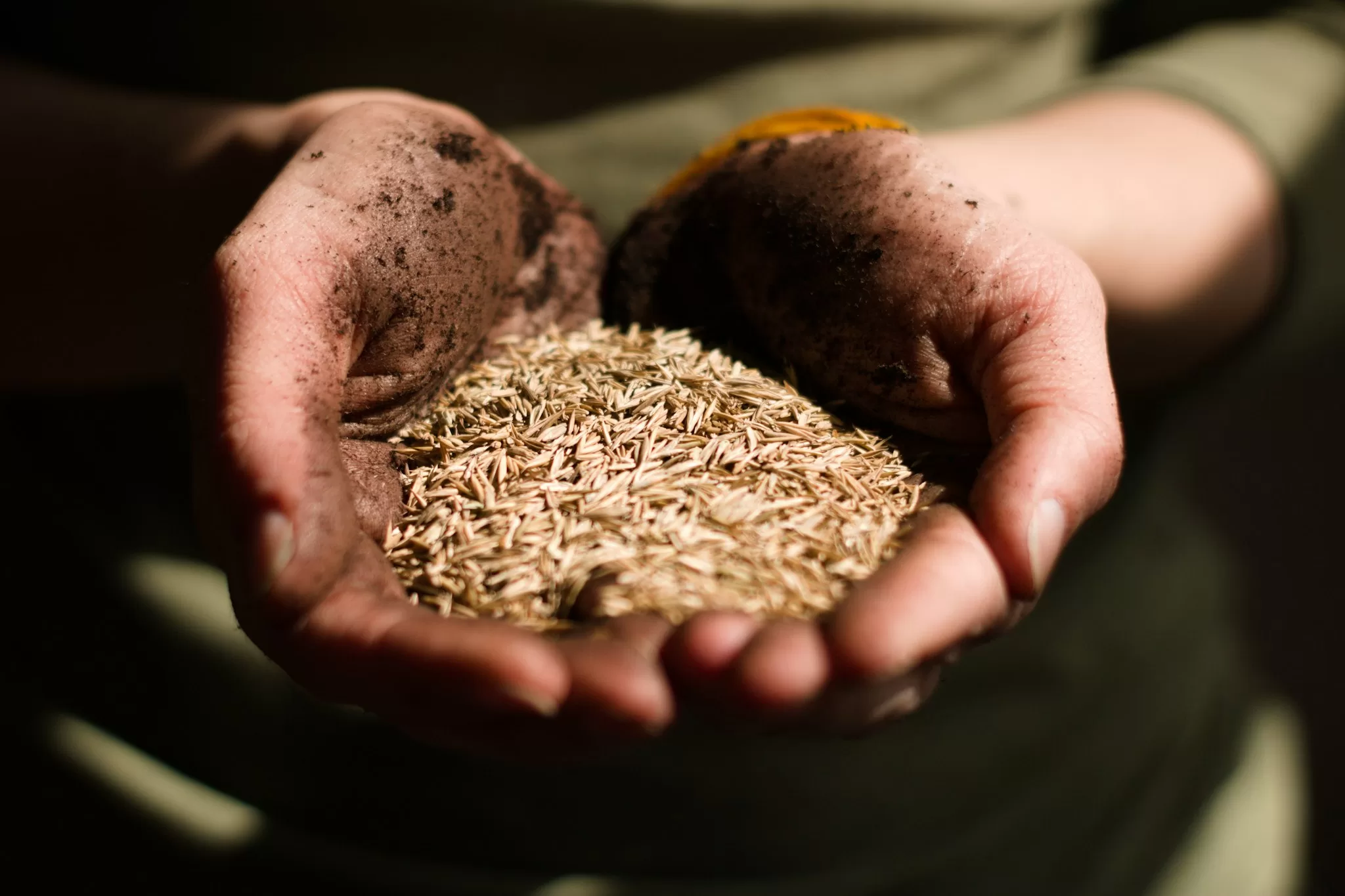Overseeding
OVERSEEDING
Professional Overseeding Services for a Lush, Green Lawn
What is Overseeding?
Overseeding is a necessity that involves applying a fresh layer of grass seed over your existing lawn. This process rejuvenates your lawn, enhances turf density, and promotes a healthier, more vibrant yard. Our professional overseeding services ensure that your lawn remains lush and green throughout the year.

Benefits of Overseeding
• Improves Turf Density: Overseeding fills in bare or thinning areas, resulting in a thicker, more uniform turf. This helps create a fuller lawn that enhances the overall look of your yard.
• Enhances Lawn Health: Introducing new grass seed improves lawn health by increasing its resilience to diseases, pests, and environmental stressors. A well-maintained lawn is better equipped to handle various challenges.
• Increases Resistance to Weeds: A dense, healthy lawn naturally resists weed invasion. Overseeding strengthens the turf, helping to crowd out weeds and prevent them from establishing.
• Improves Aesthetic Appeal: A lush, green lawn adds significant curb appeal to your property. Overseeding ensures a consistent, attractive appearance, enhancing the value and beauty of your home or business.
Combining Overseeding with Aerating and Verticutting
For optimal results, we recommend combining overseeding with aerating and verticutting. Here’s why these practices work well together:
• Aerating: Core aeration involves removing small plugs of soil from your lawn, which reduces soil compaction and enhances air, water, and nutrient penetration. When overseeding is performed after aerating, the seed can make direct contact with the soil, leading to better seed-to-soil contact and improved germination rates. Aeration also creates a more favorable environment for new seeds to establish and grow.
• Verticutting: Verticutting involves cutting into the thatch layer and removing excess organic matter. This process helps reduce thatch buildup, which can otherwise impede seed germination and water absorption. By removing this layer, verticutting allows seeds to better penetrate the soil and promotes more even seed distribution.
Benefits of Combining These Techniques
• Enhanced Seed Germination: Aerating and verticutting create ideal conditions for seed germination. The combination of improved soil contact and reduced thatch buildup leads to higher germination rates and stronger grass growth.
• Improved Lawn Health: These practices together help address common lawn issues such as compacted soil and excessive thatch. This results in a healthier lawn that is better able to thrive and resist stressors.
• Better Turf Establishment: The synergistic effect of overseeding with aerating and verticutting leads to faster andmore uniform turf establishment. This ensures that your lawn becomes lush and full more quickly.
Ideal Timing for Overseeding in Kansas City
The best time to overseed your lawn in Kansas City is from late August to mid-September. Here’s why fall is the ideal season for overseeding:
• Optimal Growing Conditions: Fall provides cooler temperatures and consistent moisture, which are ideal for seed germination and establishment. The milder weather allows new grass to grow and develop a strong root system before winter sets in.
• Reduced Weed Competition: Overseeding in the fall minimizes the risk of weed competition. Spring overseeding can lead to new grass competing with rapidly growing weeds, which can hinder grass establishment and overall lawn health.
• Preparation for Summer: Grass seeded in the fall has time to mature before the hot summer months. This allows the new grass to develop a robust root system, making it more resilient to the stress and heat of summer.
When to Consider Overseeding
Overseeding is particularly beneficial if you notice:
• Bare or Thinning Spots: Areas in your lawn that need rejuvenation.
• Compacted Soil: Soil that restricts root growth and water absorption.
• Excessive Thatch: A thick layer of organic matter that hinders seed germination.
• Seasonal Wear: Lawns that have experienced significant wear or damage.
When to Water
Proper watering is essential for successful overseeding. Follow these guidelines to ensure optimal results:
• Frequent Light Watering: Water lightly several times a day to keep the soil consistently moist. This prevents the newly planted seeds from drying out and helps them germinate effectively.
• Adjust as Needed: As the seedlings begin to grow, gradually reduce the frequency of watering while increasing the depth of each watering session to encourage deeper root development.
Revitalize your lawn with our overseeding services. Our team is committed to helping you cultivate a lush lawn that enhances your property’s appeal. Schedule a consultation today to explore how these essential lawn care practices can benefit your landscape.

